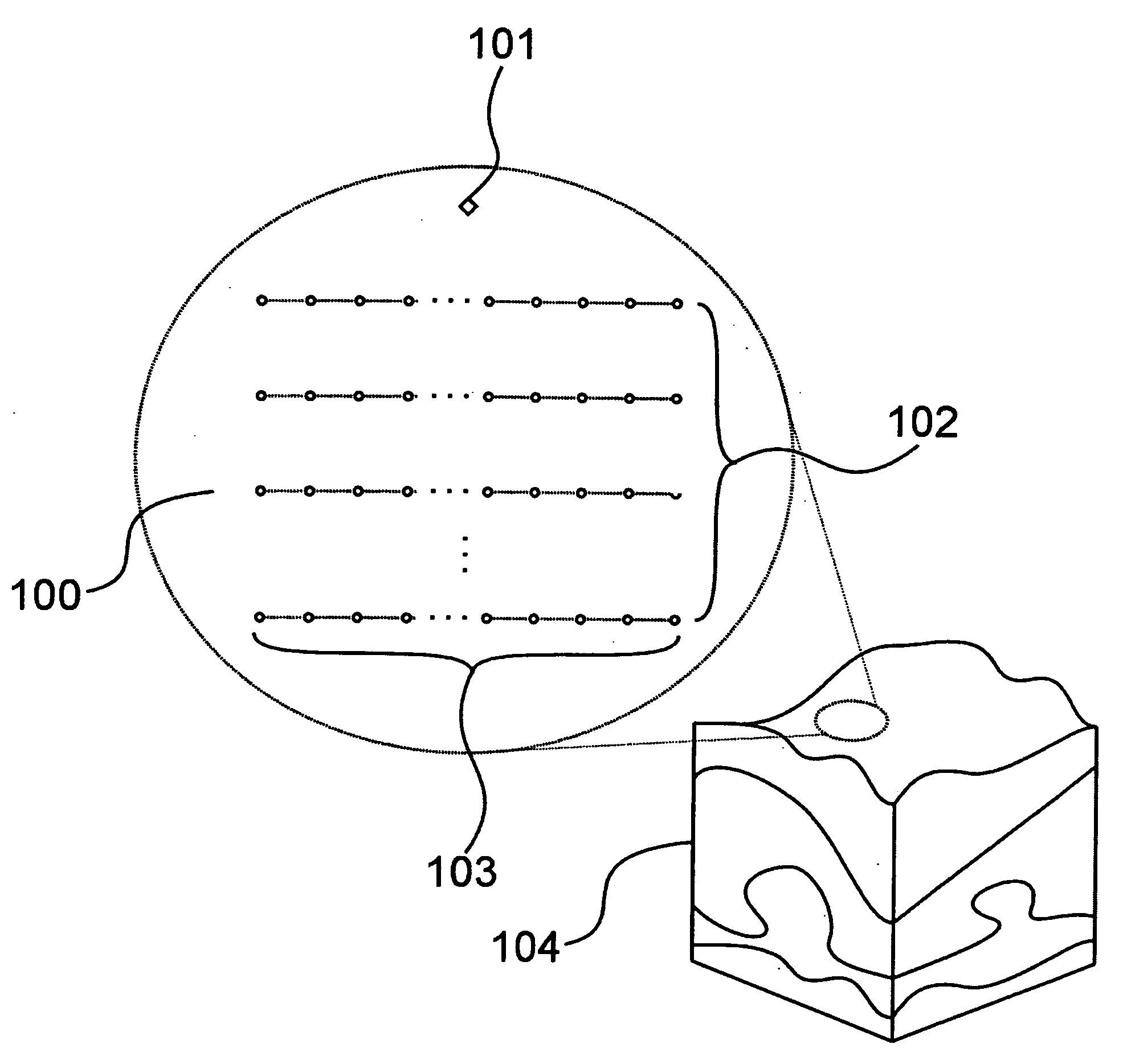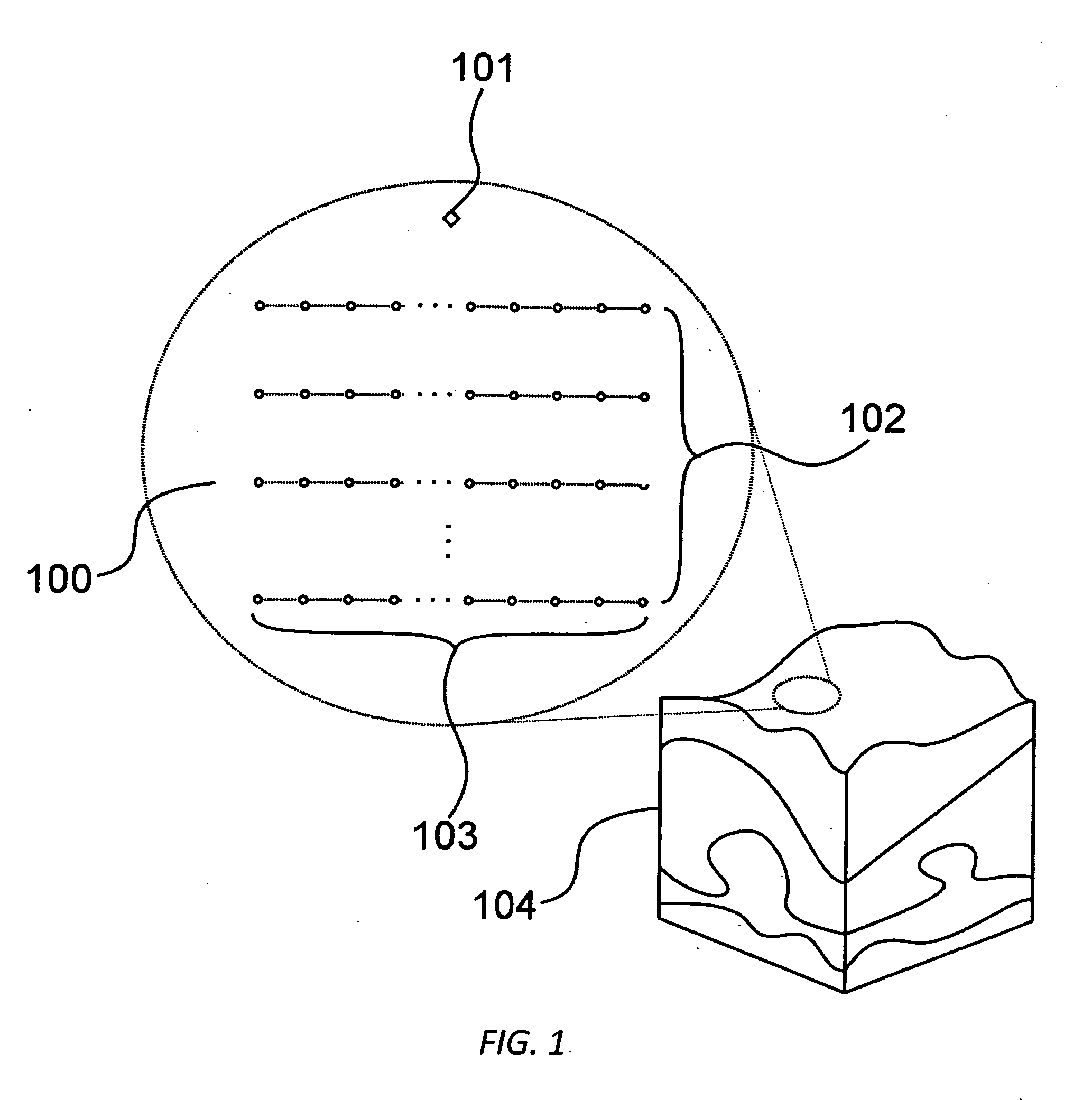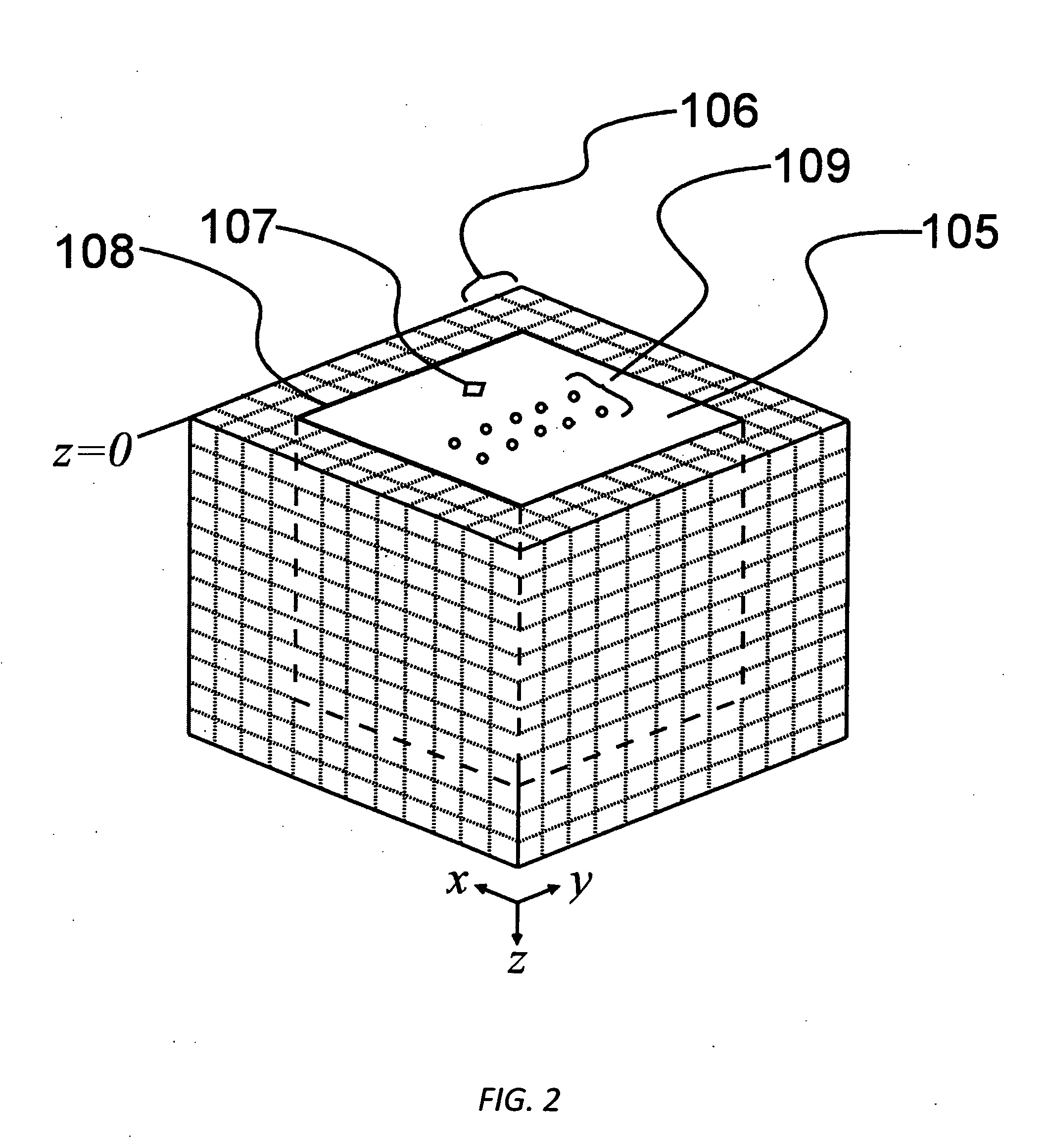Reverse-time depth migration with reduced memory requirements
a technology of memory requirements and reverse-time depth migration, applied in the field of seismic data processing, can solve the problems of low signal to noise ratio, low coverage of collected data, and inability to accurately represent source waves, so as to enhance the efficiency of computer storage and memory bandwidth, and achieve significant loss of accuracy
- Summary
- Abstract
- Description
- Claims
- Application Information
AI Technical Summary
Benefits of technology
Problems solved by technology
Method used
Image
Examples
Embodiment Construction
[0033]FIG. 1 shows an example of a typical two-dimensional sensor grid 100 that may be used to collect reflected acoustic waves for a single common-shot gather of seismic data. A source of seismic vibration 101 is excited while rows 102 of equally spaced geophones 103 record the reflections from three-dimensional subsurface geological formations 104. The source 101 is then typically moved along a line that is perpendicular to the rows 102 of the geophones and the process is repeated. The source 101 may also be moved in a direction parallel to rows 102. The acquired data are then processed and migrated for each single shot gather, and the results combined to create an image of the subsurface formations 104.
[0034]A typical survey might cover a surface area of 10,000 square kilometers, for example in a square 100 km by 100 km, and attempt to map subsurface structures to a depth of 5 to 10 kilometers or more. To perform such a survey on land, the sensor grid 100 might be 100 square kilo...
PUM
 Login to View More
Login to View More Abstract
Description
Claims
Application Information
 Login to View More
Login to View More - R&D
- Intellectual Property
- Life Sciences
- Materials
- Tech Scout
- Unparalleled Data Quality
- Higher Quality Content
- 60% Fewer Hallucinations
Browse by: Latest US Patents, China's latest patents, Technical Efficacy Thesaurus, Application Domain, Technology Topic, Popular Technical Reports.
© 2025 PatSnap. All rights reserved.Legal|Privacy policy|Modern Slavery Act Transparency Statement|Sitemap|About US| Contact US: help@patsnap.com



